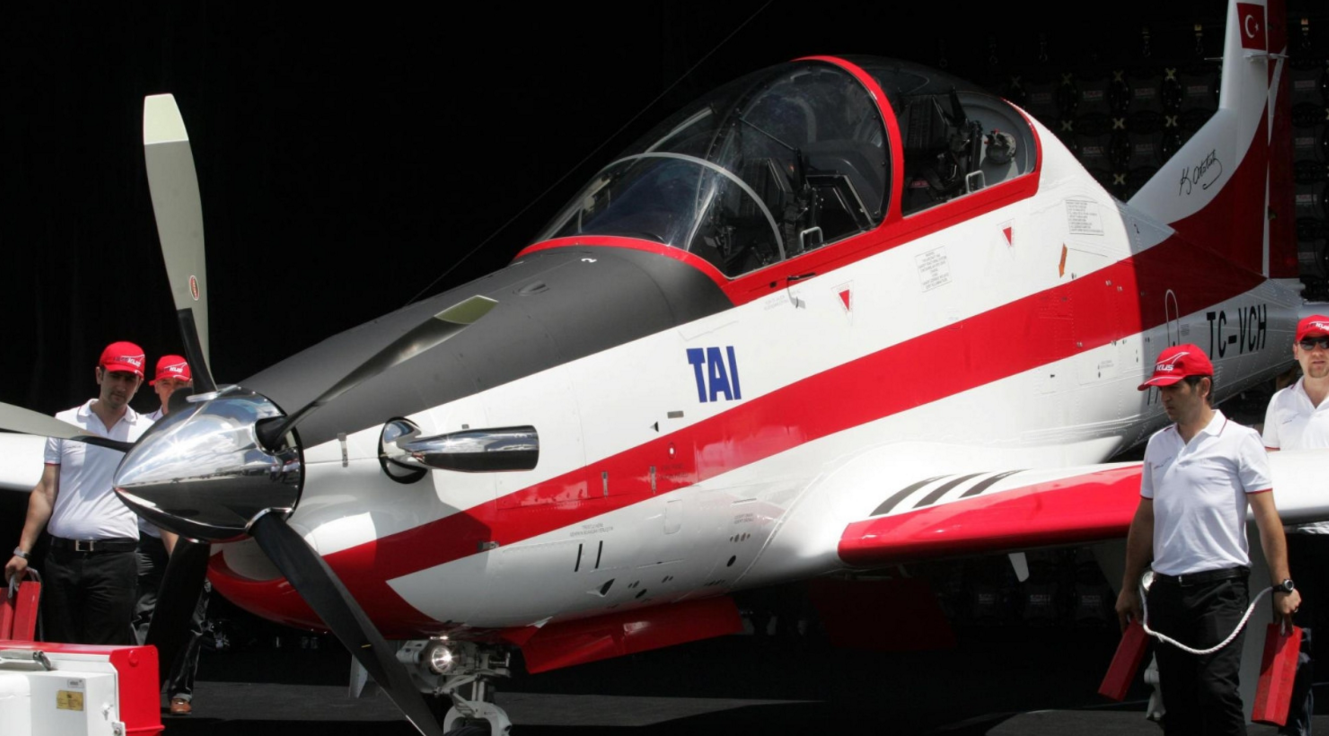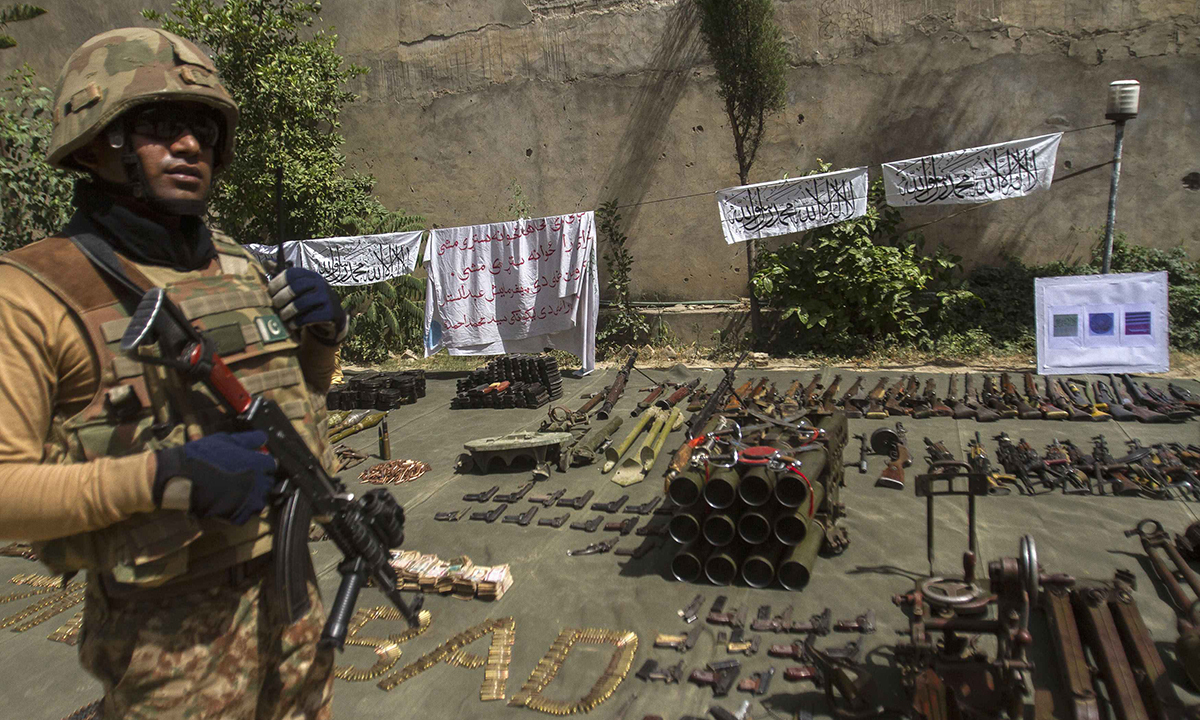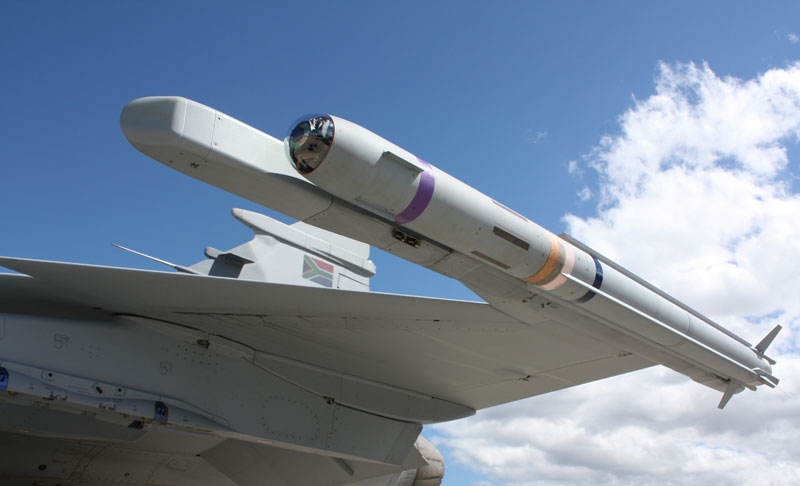39Views 4Comments

Discussion: Could the TAI Hürkuş work for Pakistan?
Foreword: This is not a news story, but a piece for the purpose of discussion. There are no official plans on the part of the Pakistan Air Force or Pakistan Aeronautical Complex to procure the Turkish Aerospace Industries Hürkuş.
Could the TAI Hürkuş work for Pakistan?
The Turkish Aerospace Industries (TAI) Hürkuş is billed as a “new generation basic trainer aircraft.” With its low-wing and tandem two-seat design as well as turboprop powerplant, the Hürkuş is being offered by TAI as a successor to older generation jet-trainers, namely the Cessna T-37 Tweet and its contemporaries, in use by the Turkish Air Force as well as the overseas market.
Development of the Hürkuş began in 2006 when the Undersecretariat for Defence Industries (SSM) awarded TAI a contract to design, develop, and produce a next-generation basic flight trainer. The Hürkuş conducted its maiden flight in August 2013. In July 2016, the Hürkuş-A – which is intended for the civilian market – had achieved certification from the European Aviation Safety Agency. The Hürkuş-B, which is to be the standard trainer variant equipped with a modern glass cockpit, is currently under development. A lightweight attack variant (akin to the popular A-29 Super Tucano) – i.e. Hürkuş-C – is also under development with test flights scheduled for May 2017 (IHS Jane’s).
The TAI Hürkuş is powered by a single Pratt & Whitney Canada PT6A-68T turboprop engine, which enables the Hürkuş to achieve a maximum speed of 574 km/h. In contrast, the T-37 – a single engine basic jet trainer – is capable of a maximum speed of 684 km/h. Although 15% slower than the T-37 (but close in terms of range and superior in service ceiling or maximum altitude), the Hürkuş – and turboprop trainers in general – are said to possess substantively lower operating costs thanks to the use of modern turboprop engines. For example, the Embraer EMB-314 Super Tucano reportedly boasts a per-hour flight cost of less than $500. While fuel consumption costs can be taken as-is, the total operating cost of an aircraft has to be determined based on its fuel consumption costs, the cost of maintenance (e.g. spare parts) and other aspects in order to come to a fair assessment.
Internally, the Hürkuş has a pressurized cockpit that is equipped with an on-board oxygen generating system (OBOGS), which negates the need for oxygen canisters, enabling for extended or long duration flights. The glass cockpit is accompanied by a hands-on throttle and stick (HOTAS) system, which is meant to familiarize pilots with modern fighter flying systems from an early stage.
Unfortunately, the Hürkuş has yet to secure a firm order from the Turkish Air Force, which had instead opted for 40 Korean Aerospace Industries (KAI) KT-1s. However, TAI is still intent on marketing the Hürkuş, and the Pakistan Air Force (PAF) is reportedly among the countries the Turkish aerospace vendor is hoping to secure as a Hürkuş customer (Defense News).
The idea of the PAF procuring the Hürkuş stems from the eventual – though much overdue – replacement of its remaining T-37 Tweet basic jet trainers. For context, the PAF’s T-37s were supposed to have been replaced by the K-8, which was jointly developed by Hongdu Aviation Industry Group (HAIG) and Pakistan Aeronautical Complex (PAC). However, a combination of U.S. sanctions (on China and Pakistan), strenuous funding issues in Pakistan, and a service-life-extension program (SLEP) implemented on the T-37 had put the K-8 induction process on a slower track than what was originally intended.
According to Flight Global’s 2016 World Air Forces inventory list, the PAF has 38 active K-8s and 18 T-37s. The PAF had also secured 34 surplus T-37s from the Turkish Air Force over the past year. Retired PAF Air Commodore Kaiser Tufail had suggested (to Defense News in 2015) that the PAF ought to consider a new turboprop design akin to the Hürkuş to eventually replace the T-37s. The rationale is basically the general idea behind modern turboprop trainers – i.e. they are close in performance but substantially cheaper to fly in comparison to jet trainers (as discussed above).
There are other valuable considerations at play as well. For example, the Hürkuş’ HOTAS and glass cockpit could offer a training experience that is in closer alignment with the flight experience of the JF-17 and F-16 (and hopefully next-generation platforms). However, the T-37s are aging, and while the PAF has done an excellent job in extending the service life and continuing with the platform, the Tweet will eventually be retired. In that sense, one could consider the Hürkuş an option, but the K-8 as well.
Unlike the Hürkuş, there are hundreds of K-8s in service around the world, and while it is a jet aircraft (i.e. with high fuel consumption), its scale, ongoing production of spare parts, and the fact that the PAF is in possession of the infrastructure to operate the aircraft could position the K-8 as the affordable package, especially in comparison to the Hürkuş. In this sense, an updated K-8 variant with HOTAS and glass cockpit could be an attractive solution for the PAF as a replacement for its remaining T-37s.
Ultimately, the PAF may not opt for the Hürkuş or turboprop trainers in general. However, this does not negate the market potential of the Hürkuş. Outside of the PAF, an increasing number of air forces are opting for turboprop trainers in lieu of basic jet trainers such as the K-8. For example, the Beechcraft T-6 Texan II’s user base includes the U.S., Canada, United Kingdom, Greece, Iraq, Israel, Mexico, Morocco and New Zealand. The Pilatus PC-21 was acquired by Singapore, Saudi Arabia, the United Arab Emirates, Qatar, Switzerland, and Australia. It is worth noting that it was Pilatus’ PC-9 platform that provided the basis for the T-6 Texan II. Furthermore, armed versions of these trainers, such as the A-29 Super Tucano, have also generated a respectable customer base, especially in the developing world.
In this sense, there may an alternative to having the PAF procure the platform, and that is to involve PAC in the Hürkuş program independently. Interestingly, Pakistan’s Minister of Defence Production Rana Tanveer Hussain outlined his intention to make the country’s defence industry entities self-sufficient, i.e. not dependent on government subsidies as a means to operate. Investment from the government to enable PAC to partner with TAI in the development, production, marketing, and sales of the Hürkuş may be an avenue worth examining. Of course, there is the reality that the market is already saturated at this point with a slew of turboprop platforms from a relatively large number of vendors. Furthermore, lack of a customer in Turkey and/or Pakistan may not bode well for the image of the Hürkuş.
In conclusion, it is difficult to assuredly back the Hürkuş, especially since its viability would, at least in Pakistan’s context, depend on the PAF’s decision, which would be to either maintain the course with the K-8, or pivot to a new platform such as the Hürkuş. A variable that could tilt the PAF’s decision towards the Hürkuş would be concessions in the form of transfer-of-technology and commercial offsets, but the value of the latter aspect would be dependent on its realizable market potential.


